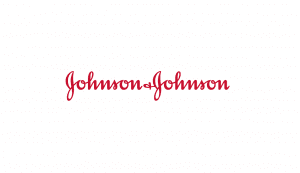
Farmak pharmaceutical company (Kyiv) in the first half of the year ranked fifth in the pharmaceutical market of Uzbekistan, the company’s share was 2.3%.
Anton Zubov, the director of marketing and sales to the CIS countries of Farmak, told Interfax-Ukraine that in January-June 2021 the company increased sales in the Uzbek market by 61% in monetary terms compared to the same period in 2020.
“Our growth would have been even higher, however, during the pandemic, we were forced to limit the export of enoxaparin sodium (included in the COVID-19 treatment protocols) in favor of meeting the needs of the Ukrainian patient as a matter of priority,” he said.
According to Zubov, Uzbekistan is a key country in the company’s export sales. In the structure of shipments of Farmak products to the CIS countries, it occupies 50%.
Speaking about the main drivers of market development, Zubov noted the focus on the purchase of vaccines and the rapid growth of COVID-associated drugs, mainly antibiotics and anticoagulants.
“It was the increase in the consumption of these drugs that led to such a significant increase in the market this year,” he said.
Zubov stressed that export is a strategic direction for Farmak, and Uzbekistan ranks first in its overall structure.
“According to the export assessment data for the first half of 2021, Farmak is the undisputed leader among Ukrainian pharmaceutical companies supplying their products to the CIS countries. Our share is 32%, which is more than twice the share of our closest competitor. The growth for the same period in relation to the previous year amounted to 23%, this year – 9%. The market share increased by 1.4 percentage points,” he said.
Zubov said that during the COVID-19 pandemic, the first place was taken by the Flenox drug, which is used to treat and prevent blood clots.
In addition, the endocrinological portfolio of the company, with the key drug Dialipon, is also in demand.
The company also notes a consistently high demand for the antiviral group, in particular, for the Amizon drug and the Picolax laxative drug.
At the same time, Zubov noted that, like many countries of the CIS region, Uzbekistan is trying to protect the interests of domestic producers.
“We see that Belarus is moving this way, introducing strict quotas on imported goods and restricting imports on pharmacy shelves. In Kazakhstan, for example, there is a “third is a crowd” rule, when, if there are two offers from local producers, the third offer from the importer is automatically withdrawn. Uzbekistan also actively defends the interests of its manufacturers. Assessing the obvious trends, our company plans to localize production of solid dosage forms in the territory of this country,” he said.
According to Zubov, at present, Farmak is actively developing a project to localize production in Uzbekistan on the basis of a pharmaceutical cluster, which is being built near Tashkent.
“Farmak has already declared its intentions to be localized in Uzbekistan. At the moment, we are actively negotiating with the directorate of the pharmaceutical cluster and are now at the stage of negotiating an investment agreement, “he said.
Zubov recalled that the declared volume of investments is $ 10 million, but “already now we see that, in fact, the amount of investment is likely to exceed the originally planned one.”
“Good equipment and specialists are expensive,” he explained.
Zubov said that traditionally the pharmaceutical market of Uzbekistan is the fourth largest in the CIS. According to IQVIA, its volume in 2020 amounted to $ 1.3 billion against $ 1.6 billion in Kazakhstan, but Uzbekistan is developing more dynamically and may take third place in 2022.
In January-June 2021, the pharmaceutical market of Uzbekistan grew by 75% in monetary terms (in U.S. dollars) and by 45% in natural terms (in the number of packages).

Johnson & Johnson Ukraine predicts a 7-9% growth in the pharmaceutical market in 2021, Johnson & Johnson Country Manager Denis Golubchykov has said.
“Regarding the development of the market, my forecast is average. I do not expect a fall or gains of 1-2%, but I do not expect double-digit gains either. Somewhere in the 7-9% range is what we expect,” he said during EBA Global Outlook held in Kyiv on Tuesday.
Golubchykov also said that due to the pandemic, the pharmaceutical market faced a crisis for the first time in recent years.
“We work in the pharmaceutical market and the FMCG market. They behaved completely differently. The pharmaceutical market at first gave a panic leap upwards. It is not clear why people decided to buy half a pharmacy. Naturally, this played negatively and even more in April. The market fell very dramatically and it is slowly creeping out of there. All previous crises did not affect the pharmaceutical industry, this is the first time,” he said.
“The FMCG market behaved differently. All this [the fall] happened later, by the beginning of summer, and not so dramatically downward, and respectively, it will not take so long to get out of the situation. From part of the market, a new category has formed – people have got used to using more detergents, disinfection in several months. This category is growing within the market. Beauty has dropped dramatically,” Golubchykov said.

The share of public procurement of medicines in January-March 2019 totaled 20% of the Ukrainian pharmaceutical market, SMD consulting company (Kyiv) has said after studying the Ukrainian pharmaceutical market.
According to the company, in January-March 2019, budget medical procurement in monetary terms increased 40% compared to the same period of 2018 in the centralized procurement segment and by 19% in the procurement segment of medical institutions.
In addition, budget procurement in kind increased 134% in the segment of centralized procurement and by 13% in procurement by hospitals.
At the same time, the company said that in the first quarter of 2019, hospitals, in accordance with their needs, used the ending stocks of the 2018 budget funds to purchase drugs and expensive medicines.
In general, in the first quarter of 2019, the pharmaceutical market of Ukraine grew by 11% in monetary terms compared to the same period of 2018, to UAH 13 billion, while in kind it fell by 7%, to 177 million packages.
At the same time, according to the analysts of the company, the prescription segment in the first quarter of 2019 grew by 17% in monetary terms and decreased 1% in physical terms.
In addition, in the first quarter of 2019, sales of foreign manufacturers in kind decreased 5%, while sales of Ukrainian pharmaceutical manufacturers decreased 8%.

Biopharma, a blood products maker, plans to boost suppliers of its products to the traditional markets for the company and actively develop new ones – India, African countries, Biopharma Group President Kostiantyn Yefymenko has said in an interview with Interfax-Ukraine. The group plans to boost sales in Ukraine and supplies to Belarus, Kazakhstan, Uzbekistan, Azerbaijan, Armenia, Tajikistan, Kyrgyzstan and Georgia.
“At the same time, the most promising for us is the Indian market, and after it – Africa, where we will intensively increase our presence,” Yefymenko said.
Commenting on plans for expansion of activities in foreign pharmaceutical markets, he said that currently Biopharma “does not strongly focus on the EU countries” because of the conservatism of this market, although it delivers its drugs, in particular probiotics, to some European countries – Slovakia and the Czech Republic.
Biopharma is one of the ten largest Ukrainian producers of medicines. It produces more than 20 immunobiological preparations from donor blood, preparations obtained by recombinant DNA technology and probiotics.